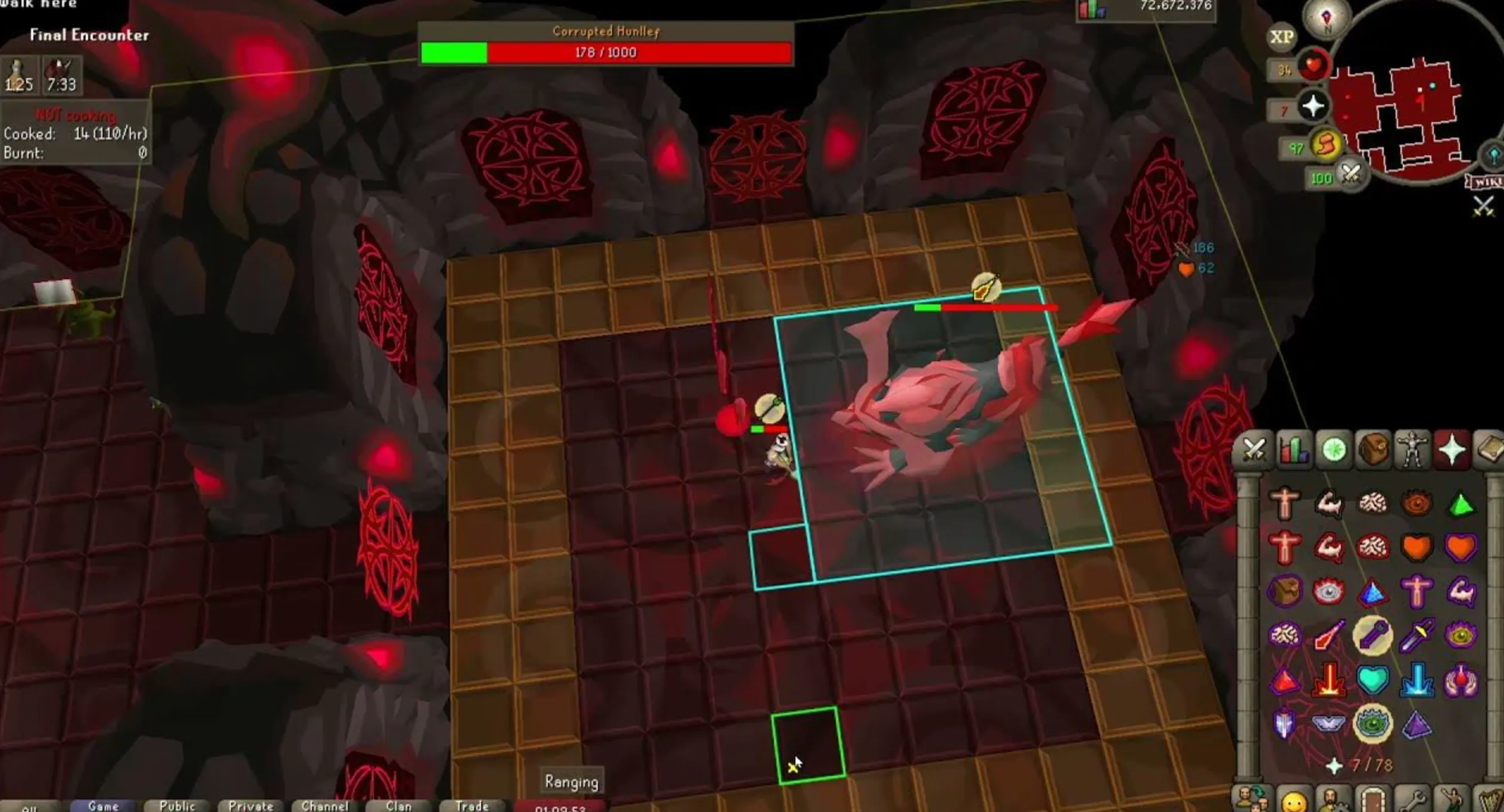Your cart is empty
OSRS Celastrus Tree: Is It Worth It? A Deep Dive for Players

Old School RuneScape (OSRS) offers a plethora of farming opportunities, and one of the more intriguing additions is the Celastrus tree. Introduced with the Farming Guild update in January 2019, this high-level tree has sparked discussions among players about its value. Requiring level 85 Farming to plant, the Celastrus tree yields bark that can be turned into battlestaves, but is it worth the time, effort, and gold? In this blog post, we’ll explore the profitability, experience gains, and practical uses of the Celastrus tree to help you decide if it belongs in your farming rotation.
The Celastrus tree is a unique addition to OSRS, exclusive to the high-tier Celastrus patch in the Farming Guild’s advanced section. Unlike traditional trees that yield logs or fruit, this tree produces Celastrus bark, which can be fletched into battlestaves with level 40 Fletching. It’s a high-investment option due to its seed cost and growth time, but it also offers substantial Farming XP and a niche product.
How to Grow a Celastrus Tree
Growing a Celastrus tree follows the standard OSRS tree-growing process with a few specifics:
- Requirements: 85 Farming, a Celastrus seed, a filled plant pot, a trowel, a watering can, and a spade.
- Steps: Plant the seed in a pot, water it to grow a sapling, then plant it in the Celastrus patch.
- Protection: Pay the nearby farmer 8 potato cacti (noted or unnoted) to protect it from disease.
- Growth Time: 800 minutes (13 hours and 20 minutes), making it a daily farming option.
Celastrus Tree Basics
Once fully grown, checking its health grants 14,130 Farming XP, one of the highest single-check XP drops for trees in OSRS. Harvesting the bark provides 23.5 XP per piece, with a minimum yield of 3 bark and potential for more based on factors like compost and tools. After harvesting, the tree must be chopped down and cleared, as it doesn’t regrow like fruit trees.
Is the Celastrus Tree Profitable?
Profitability is a key concern for OSRS players, especially with high-level farming options like the Celastrus tree. Let’s break it down by costs, yields, and market value.
Cost Analysis
Planting a Celastrus tree involves several expenses:
- Celastrus Seed: Prices fluctuate, but as of April 2025, seeds average around 80,000–100,000 GP on the Grand Exchange.
- Protection Payment: 8 potato cacti cost approximately 6,000–8,000 GP total, depending on market rates.
- Optional Boosts: Ultracompost (around 800 GP) or magic secateurs (negligible cost if owned) can increase yield.
Total cost per tree: roughly 90,000–110,000 GP without additional boosts.
Yield and Revenue
The Celastrus tree’s bark yield varies, similar to herb patches. The minimum is 3 bark, but with ultracompost, magic secateurs, and high Farming levels (90+), players report averages of 7–9 bark, with some hitting 10+.
- Bark Value: Each bark fletches into a battlestaff, worth about 8,000–8,200 GP (alch value: 7,000 GP).
- Minimum Revenue: 3 bark = 24,000–24,600 GP.
- Average Revenue: 7–9 bark = 56,000–73,800 GP.
- Max Potential: 10+ bark = 80,000+ GP.
At an average yield of 8 bark, you’d earn 64,000–65,600 GP per tree.
Profit or Loss?
Subtracting the average cost (100,000 GP) from the average revenue (65,000 GP) results in a loss of about 35,000 GP per tree. Even at maximum yield (10 bark = 80,000 GP), you’re still short of breaking even unless seed prices drop significantly. For profit-focused players, this makes the Celastrus tree a tough sell unless you source seeds cheaply (e.g., via bird nests or contracts).
| Scenario | Cost (GP) | Revenue (GP) | Profit/Loss (GP) |
|---|---|---|---|
| Minimum Yield (3 bark) | 100,000 | 24,000 | -76,000 |
| Average Yield (8 bark) | 100,000 | 65,000 | -35,000 |
| Max Yield (10 bark) | 100,000 | 80,000 | -20,000 |
Farming XP: A Major Selling Point
While profit may not favor the Celastrus tree, its XP rewards are a significant draw, especially for players chasing 99 Farming or the Kourend & Kebos Elite Diary.
XP Breakdown
- Planting: 204 XP (sapling to patch).
- Checking Health: 14,130 XP, outpacing palm trees (10,150 XP) by over 4,000 XP.
- Harvesting: 23.5 XP per bark (e.g., 8 bark = 188 XP).
- Total XP (Average): ~14,522 XP per tree.
Compared to other high-level trees like magic (13,768 XP) or redwood (22,450 XP but with a 4.5-day growth time), the Celastrus tree offers excellent XP for its 13-hour cycle.
XP Efficiency
For players doing daily runs, Celastrus trees fit neatly into a routine alongside fruit and hardwood trees. Two runs per day (if timed right) could net 29,000+ XP, making it a viable option for the 85–99 grind. At roughly 7 GP/XP (assuming a 100,000 GP cost), it’s pricier than cheap methods like oak trees (1–2 GP/XP) but competitive with palm trees (10–12 GP/XP).
Practical Uses and Niche Benefits
Beyond profit and XP, the Celastrus tree has situational perks that might sway your decision.
Battlestaff Production
Each bark becomes a battlestaff, which Ironmen or Fletching enthusiasts can use for crafting or alching. With 80 Fletching XP per battlestaff, harvesting 8 bark adds 640 XP, a small but welcome bonus for mid-level Fletchers.
Farming Contracts and Diary Tasks
The Celastrus tree is a frequent target for Farming Guild contracts, offering high-level seed rewards like ranarr or snapdragon. Completing a contract with it can offset losses or even turn a profit if you score a valuable seed. Plus, growing one is a requirement for the Kourend & Kebos Elite Diary, adding long-term account value.
Tick Manipulation
For advanced players, Celastrus bark is a top choice for 4-tick manipulation in skills like Woodcutting or Mining. Harvesting bark on a 4-tick cycle boosts XP rates significantly, making it a niche but powerful training tool.
Should You Plant Celastrus Trees?
So, is the Celastrus tree worth it? It depends on your goals in OSRS.
Who Should Plant It
- XP Chasers: If you’re pushing for 99 Farming or maxing, the 14,130 XP per health check is hard to beat for a daily run.
- Ironmen: Self-sufficient players benefit from battlestaff production and contract rewards.
- Diary Completers: Elite Diary runners need at least one Celastrus tree, so it’s a must-do eventually.
Who Should Skip It
- Profit Seekers: The consistent GP loss makes it unappealing unless seed prices crash or you get them free.
- Low-Level Farmers: At 85 Farming, it’s inaccessible to beginners, and the cost outweighs early-game benefits.
Final Verdict
The Celastrus tree isn’t a goldmine, but it shines as an XP powerhouse with niche utility. If you prioritize Farming levels, enjoy Fletching, or need contract rewards, it’s worth adding to your rotation. For pure profit, stick to herb runs or cheaper trees like mahogany. Weigh your priorities—XP, GP, or account progression—and decide if this quirky tree fits your OSRS journey.
Have you tried growing Celastrus trees? Share your yields and thoughts in the comments below!

